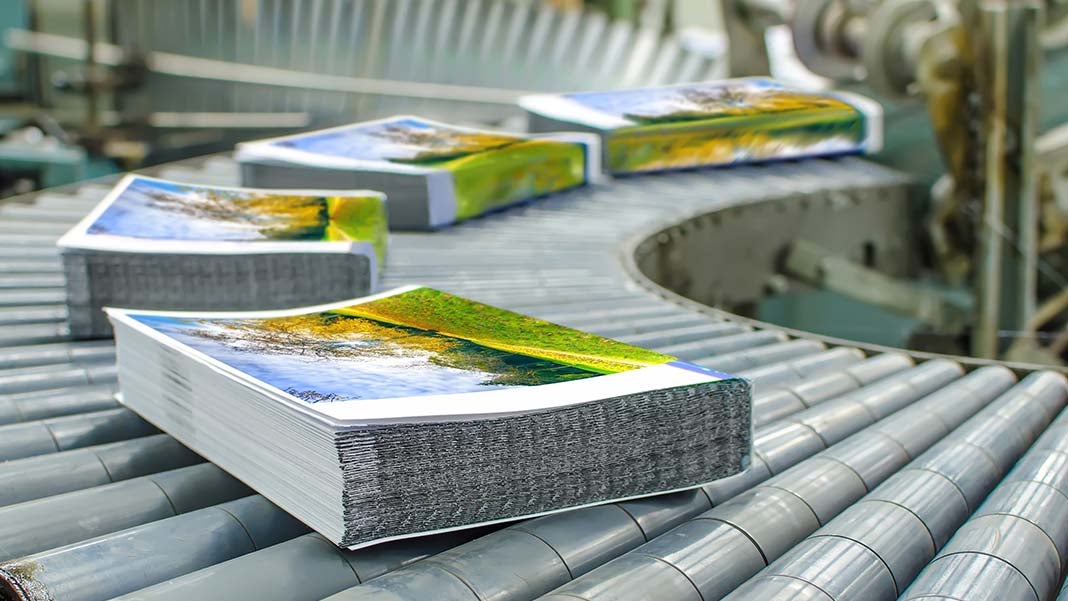Do You Know the Environmental Impact of Your Printed Marketing Campaigns?
By: SmallBizClub

There is much concern these days for the well-being of the environment and our planet—as there should be.
Being a responsible consumer and business owner is an important part of what it means to be a conscious global citizen. Luckily, as technology develops, there are increasingly more ways to reduce your environmental impact and carbon footprint, though they may not be the ways you might think.
It’s easy to conclude that printing is damaging to the environment because to produce paper we must cut down trees. But that isn’t the whole story. In fact, it’s hardly the half of it.
Paper: The Process of Production
To produce paper, the paper industry cuts down forests to harvest the lumber, then deliver logs of wood to a paper mill, where the wood is crushed into a pulp, and the pulp is made into rolls of paper. But an important piece of this puzzle: 90% of deforestation is due to unsustainable agricultural practices.
With that in perspective, let’s also take a look at re-forestation. By replanting trees in a way that supports biodiversity, such as is the case in semi-natural forests, the paper industry and others are encouraging the development of sustainable production practices. Since 1950, European forests have grown by more than 30% and are increasing every year by an area four times the size of London.
When paper is finally recycled, it can take on a new life as another piece of paper multiple times over. Recycling paper is a sustainable way to reduce waste and the impact it has on forests worldwide.
The Modern Conundrum: Paper or Screen?
Accepting the semi-truth that paper production uses trees, it would be easy to follow that the use of electronics is more environmentally friendly—but this too would be untrue.
All things considered—the fossil fuels required to produce electricity to power our electronics, and the massive electronic waste that accumulates in landfills every year—electronic communication is not necessarily more eco-friendly than paper communication.
Because trees absorb carbon throughout their lifecycle, removing the gas from our atmosphere, they contribute to cleaning up the air as they grow. Electronics, on the other hand, require the burning of fossil fuels throughout the production and post-production stages of their lives. Thus, it’s too narrow to say that one or the other is always more environmentally friendly. Both paper and digital media require resources and require a deeper understanding of their real impacts.
How Environmentally Friendly Is Your Printed Marketing Campaign?
With so many benefits to printed marketing campaigns, and eco-friendly ways to execute them, their popularity is growing especially when combined with digital. However, there are a few things to consider as you plan an eco-friendly marketing campaign, as some resources and methods are more sustainable and less harmful than others.
Some resources to lean toward:
- Eco-friendly printers: These machines instantly remove the toner colors from paper that’s already been printed on, effectively creating a blank canvas for new prints.
- Local: Any local printing and paper production resources will eliminate the emissions and waste that are inherent in transportation processes. Also, try to ensure you use paper stock that has not been bleached using chlorine bleach.
- Post-consumer waste: The higher this percentage, the better. Any amount of post-consumer waste reduces our overall impact.
- Unbleached paper: Off-white or natural white papers are not bleached, so fewer chemicals and less energy are used throughout the paper production process.
- Eco-conscious printing companies: When you’re planning a printed marketing campaign, you’ll want to work with a company who cares about the environment as much as you do.
All in all, recycled paper is the greenest option for printed marketing. You can go the extra step by reminding your consumers to recycle your printed product after they’re finished enjoying it.
We shouldn’t have to choose between high-quality printing and being friends of the planet – and with modern technology, in many ways, we don’t have to. With a bit of research and the right resources, you can find the best of both worlds by creating a successful print marketing campaign and reducing your environmental impact.
Author: Chris Holloway is MD of Manor Printing Services in Bristol and is passionate about helping clients drive and develop their brand through print. Chris has grown Manor Printing for the past 27 years and has seen the company develop into one of the foremost environmental printers in the UK. You can connect with Chris on Twitter, Google +, and LinkedIn or call Manor Printing on 01453 843 891.
2870 Views












